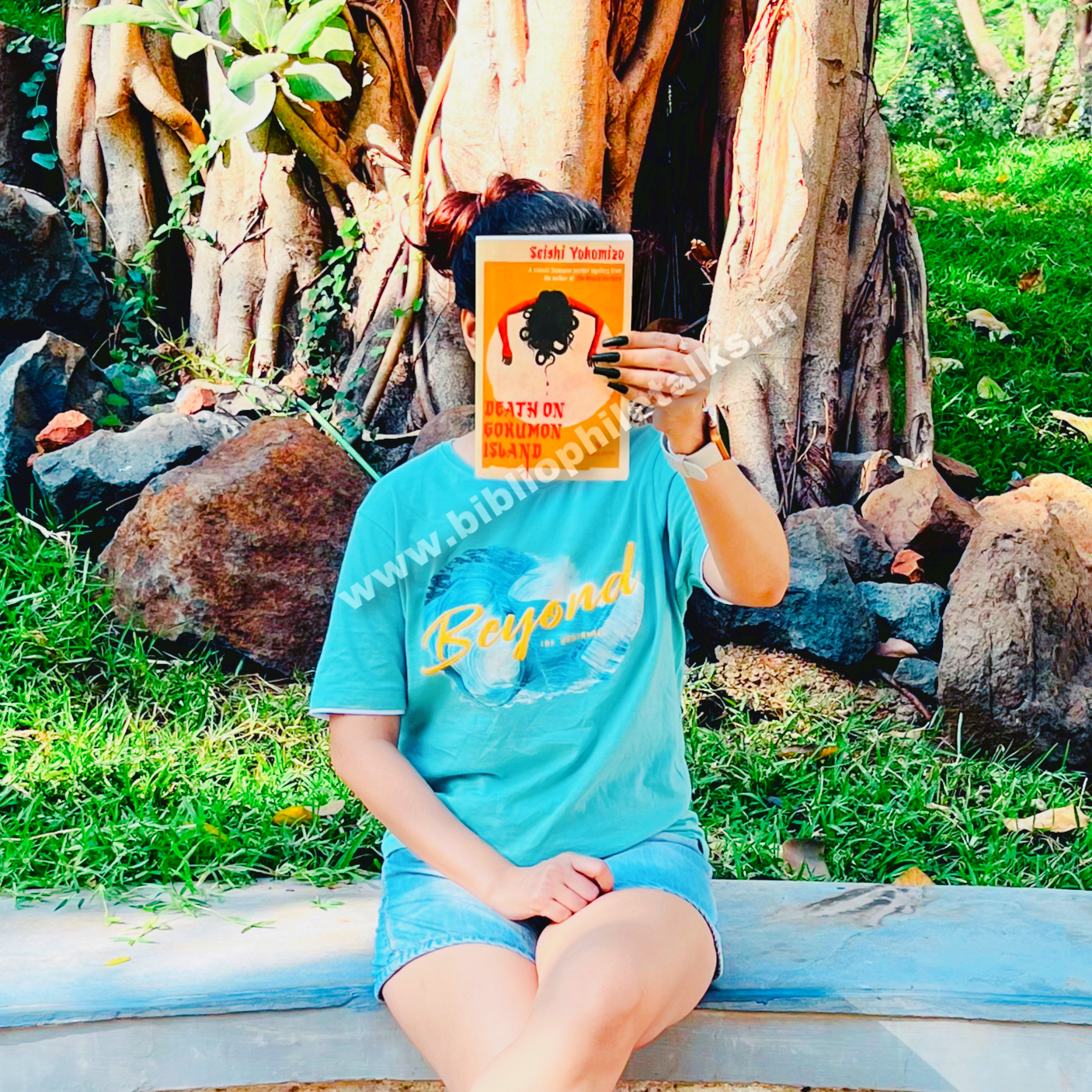DEATH ON GOKUMON ISLAND

𝐃𝐞𝐚𝐭𝐡 𝐎𝐧 𝐆𝐨𝐤𝐮𝐦𝐨𝐧 𝐈𝐬𝐥𝐚𝐧𝐝
𝐁𝐲 𝐒𝐞𝐢𝐬𝐡𝐢 𝐘𝐨𝐤𝐨𝐦𝐢𝐳𝐨
𝐏𝐮𝐛𝐥𝐢𝐬𝐡𝐞𝐫: 𝐏𝐮𝐬𝐡𝐤𝐢𝐧 𝐕𝐞𝐫𝐭𝐢𝐠𝐨
𝐏𝐚𝐩𝐞𝐫𝐛𝐚𝐜𝐤: 𝟑𝟐𝟎
𝐏𝐮𝐛𝐥𝐢𝐬𝐡𝐞𝐝: 𝟑𝟎𝐭𝐡 𝐌𝐚𝐫𝐜𝐡 𝟏𝟗𝟕𝟏
𝐆𝐞𝐧𝐫𝐞: 𝐌𝐮𝐫𝐝𝐞𝐫 𝐌𝐲𝐬𝐭𝐞𝐫𝐲/ 𝐂𝐥𝐚𝐬𝐬𝐢𝐜 𝐅𝐢𝐜𝐭𝐢𝐨𝐧
𝐉𝐚𝐩𝐚𝐧𝐞𝐬𝐞 𝐋𝐢𝐭𝐞𝐫𝐚𝐭𝐮𝐫𝐞
𝐑𝐞𝐚𝐝𝐢𝐧𝐠 𝐘𝐞𝐚𝐫: 𝟐𝟎𝟐𝟒
The narrative of "Death on Gokumon Island" adheres closely to the traditional framework of a classic murder mystery, with the enigmatic Detective Kosuke Kindaichi taking centre stage. However, this instalment diverges by situating Kindaichi in post-war Japan, years after his involvement in the notorious Honjin Murders case, as he embarks on a journey to the infamous Gokumon Island.
Gokumon Island, steeped in rumours of generations of pirates and convicts, harbours the memory of Chimata Kito, a fallen comrade-in-arms to Kosuke and heir to a prominent fishing family on the island. Following Chimata's demise, Kosuke receives a specific directive from his late friend: to visit Gokumon Island and safeguard Chimata's three sisters from an imminent series of murders.
Thus begins a sequence of peculiar and horrible events from the moment Kosuke steps on the island until the climax, where the identities of the culprit(s) are ultimately unveiled.
Yokomizo's signature approach involves an in-depth exploration of the historical backdrop of the setting, a characteristic trait that establishes the atmospheric foundation of the narrative. I find this technique captivating because it provides insight into the intricate history of the island, thereby offering a preview of the islanders' characteristics and expectations.
The author delves into various aspects, ranging from the island's geography and the lineage of its inhabitants to the dominant familial figures, the thriving fishing industry, and the concealed intricacies of the community. While this style might initially disorient readers unfamiliar with Yokomizo's writing, rest assured that this introductory exposition serves as a deliberate manoeuvre by the author to orient readers towards the intended direction of the narrative. By furnishing these meticulous details, readers gain a deeper understanding of the locale, its cultural nuances, and the significance they hold in the unfolding crime narrative.
In conclusion, I found immense enjoyment in this piece. The pacing was superb, devoid of any tedious moments, and the translation transitioned seamlessly, enhancing the overall fluidity of the narrative. Furthermore, I was particularly impressed by the seamless integration of Japanese art, poetry, and historical references into the storyline. Such elements added a layer of depth and cultural richness that greatly contributed to my engagement with the text. I am already eagerly anticipating the opportunity to explore more of the author's works in the future.
My Rating:
4/5
NOTE: In this blog, the CONTENT and PICTURES are owned by Samayra Singh, and cannot be used or distributed without permission. Strict legal action will be taken against any infringement.